Picture this: It’s 1938, and some guy named Max Morgenthaler is trying to figure out how to make coffee that doesn’t go bad. “Nestlé introduced Nescafé, a soluble powdered coffee, on April 1, 1938” (Packaging Seller), marking the beginning of what would become one of the world’s most successful brand transformations. Fast forward to today, and that “simple” instant coffee is now a global empire that somehow convinced millennials to drink instant coffee again. How the hell did they pull that off?
From this humble beginning as a wartime coffee solution, Nescafé has evolved into a global powerhouse that shows exactly how smart digital evolution can transform even the most traditional products into lifestyle brands that actually resonate across cultures and generations.
Table of Contents
-
Strategic Brand Evolution and Market Positioning
-
Digital Transformation and Consumer Engagement
-
Market Segmentation and Product Innovation
-
Global Expansion and Cultural Adaptation
-
Competitive Response and Market Defense
-
Brand Measurement and Performance Analytics
-
How The Marketing Agency Can Transform Your Brand
TL;DR
-
Nescafé transformed from basic instant coffee to a global lifestyle brand through smart digital-first marketing and cultural adaptation
-
Their social media setup focuses on building communities and getting customers to create content, not just pushing ads
-
Premium product positioning (like Nescafé Gold) actually competes with specialty coffee brands through targeted messaging
-
Regional customization keeps the brand consistent globally while respecting what locals actually want
-
Sustainability messaging became a core differentiator, with the Nescafé Plan 2030 built into everything they do
-
They measure success through brand consideration lift and customer lifetime value across channels
-
Crisis management emphasizes honest communication and quick brand rehabilitation
Strategic Brand Evolution and Market Positioning
Look, I’ve been watching brands try to pull off this kind of transformation for years, and most crash and burn spectacularly. Nescafé’s journey from simple instant coffee to comprehensive lifestyle brand shows exactly how to do strategic repositioning without losing your soul.
The brand didn’t just expand their product line—they fundamentally shifted how people think about instant coffee. Through careful market analysis and actually listening to consumers, Nescafé positioned itself as premium yet accessible, fitting seamlessly into modern lifestyles.
What really gets me about their approach is they never abandoned their core identity. Instead of completely reinventing themselves like so many brands attempt, they enhanced what already worked while addressing what customers actually wanted. This transformation took years of consistent messaging, real product innovation, and strategic partnerships that elevated the entire instant coffee category.
Their positioning strategy centers on convenience without compromise. You can see this everywhere—from packaging design to digital campaigns. They’ve successfully convinced people that instant doesn’t mean inferior, which is no small feat.
What makes their evolution particularly impressive is how they’ve stayed relevant across multiple generations. Millennials and Gen Z consumers, who typically gravitate toward artisanal coffee experiences, have actually embraced Nescafé’s premium lines because the brand adapted its communication style and product offerings to match what these groups actually care about.
Their strategic brand evolution demonstrates principles similar to those discussed in our comprehensive market sizing guide for business opportunities, where understanding market potential drives smart positioning decisions.
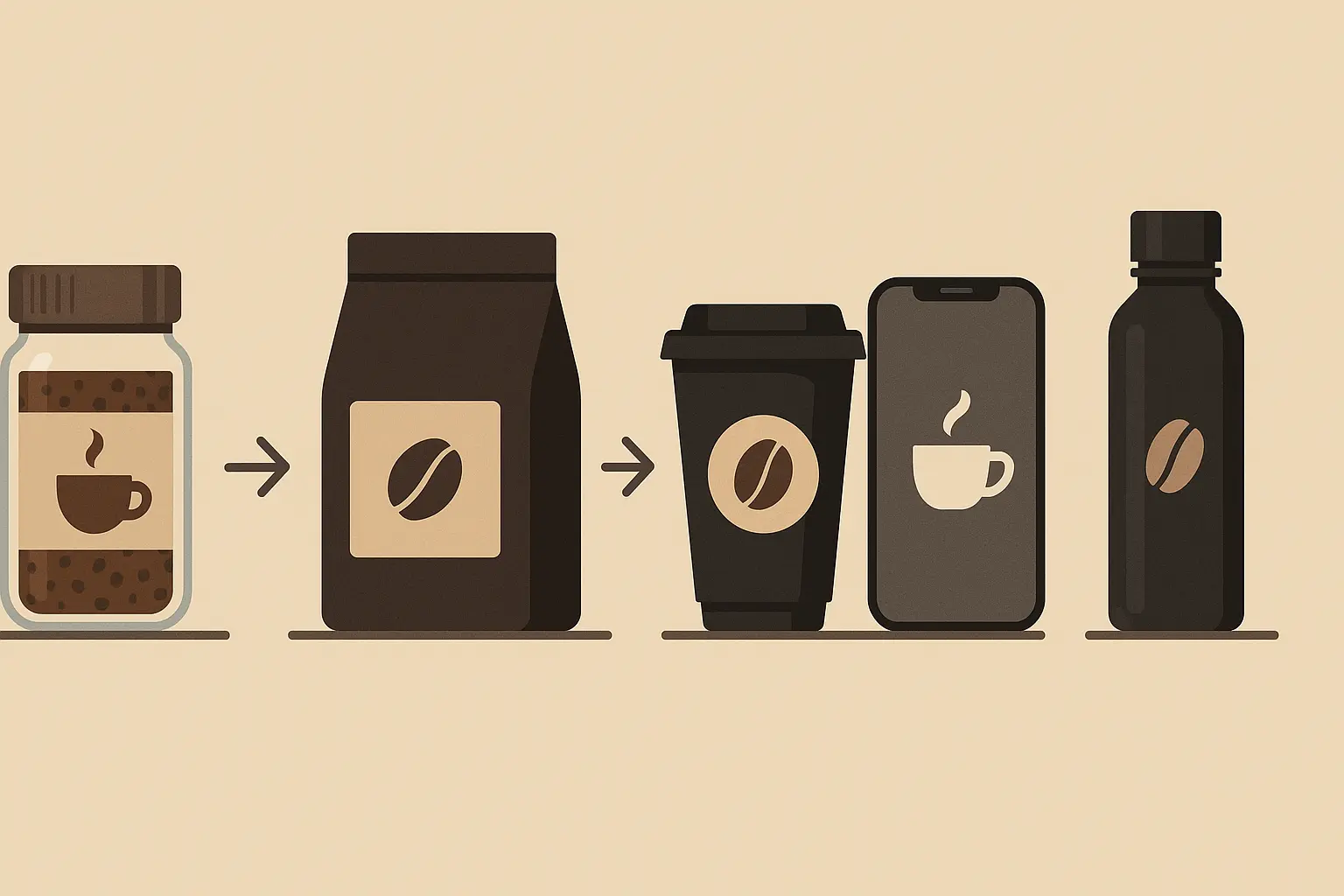
Digital Transformation and Consumer Engagement
Here’s where things get really interesting. Nescafé’s digital transformation represents a masterclass in modern consumer engagement. Rather than just moving traditional advertising online (which is what most brands do and wonder why it doesn’t work), they rebuilt their entire marketing approach around digital-first strategies.
This shift involved creating authentic connections through social media, developing direct-to-consumer platforms, and leveraging data analytics to actually personalize customer experiences instead of just claiming they do.
The shift toward digital wasn’t optional for Nescafé—it was survival. Traditional coffee advertising relied heavily on TV commercials and print ads, but consumer behavior had already moved online. I’ve seen the data on how coffee purchases are influenced by social media, and it’s staggering.
Their digital strategy focuses on creating moments rather than pushing products. You’ll notice their social content rarely features direct product shots. Instead, they showcase experiences, emotions, and lifestyle moments where coffee naturally fits. It’s subtle, but it works.
The brand’s digital transformation also enabled them to collect unprecedented amounts of consumer data. This information drives everything from product development to campaign targeting, creating a feedback loop that continuously improves their marketing effectiveness.
Nescafé’s innovative approach to reaching Gen Z demonstrates their digital transformation success. “The campaign generated 20.7 million views at an overall level, generating buzz across multiple channels” (Social Samosa) through their Minecraft gaming integration, showing how brands can authentically connect with digital-native audiences in their preferred spaces.
Social Media Campaign Architecture
Building a social media presence that actually drives business results requires more than posting pretty pictures and hoping for the best. Nescafé’s social media strategy operates on a smart multi-platform setup that prioritizes community building over traditional advertising.
Their approach involves creating platform-specific content while maintaining consistent brand messaging across channels. The strategy emphasizes user-generated content, authentic storytelling, and real-time engagement with consumers.
This has transformed their social presence from a broadcasting channel into a dynamic community hub where coffee lovers actually connect and share experiences. Their user-generated content campaigns are particularly effective because they tap into authentic consumer experiences. When someone shares their morning coffee ritual using Nescafé, it carries way more weight than any professionally produced advertisement.
The brand’s community management strategy focuses on genuine engagement rather than automated responses. They’ve trained their social media teams to recognize opportunities for meaningful conversations, not just promotional pushes.
Platform-specific adaptations show their understanding of different audience behaviors. Their Instagram content differs significantly from their LinkedIn approach, yet both feel authentically Nescafé.
Their social media success mirrors strategies outlined in our guide on high-impact blog topics, where understanding audience preferences drives content strategy decisions.
|
Platform |
Content Strategy |
Engagement Focus |
Key Metrics |
|---|---|---|---|
|
|
Visual storytelling, coffee moments |
Lifestyle inspiration |
Engagement rate, reach |
|
TikTok |
Trend participation, coffee hacks |
Entertainment, creativity |
Views, shares, hashtag usage |
|
|
Community building, discussions |
Connection, conversation |
Comments, community growth |
|
YouTube |
Educational content, behind-scenes |
Information, transparency |
Watch time, subscribers |
|
|
Sustainability initiatives, B2B |
Professional networking |
Professional engagement |
Influencer Partnership Strategy
Working with influencers requires a delicate balance between brand messaging and authentic content creation. Most brands screw this up by being too controlling or too hands-off.
Nescafé’s influencer partnerships extend beyond typical sponsored content arrangements to create authentic, long-term relationships with content creators. Their strategy involves careful selection of influencers whose values actually align with the brand, focusing on genuine coffee enthusiasts rather than just follower counts.
These partnerships have successfully expanded Nescafé’s reach into new demographic segments while maintaining authenticity and driving measurable ROI through strategic campaign design and performance tracking.
Their micro-influencer strategy particularly impressed me because it focuses on engagement rates rather than follower counts. A coffee enthusiast with 10,000 highly engaged followers often delivers better results than a celebrity with millions of passive followers.
The brand’s influencer selection criteria emphasize lifestyle alignment over demographics alone. They partner with creators who genuinely incorporate coffee into their daily routines, making the partnerships feel natural rather than forced.
Long-term partnerships have proven more effective than one-off campaigns. When influencers consistently feature Nescafé products over months or years, their audiences begin to associate the creator’s lifestyle with the brand.
Nescafé’s gaming influencer campaign demonstrates innovative partnership strategies. They collaborated with 60 top streamers, including GamerFleet and UnGraduate Gamer, during Minecraft gameplay sessions. The campaign achieved an impressive 13.4% CTR rate among top gaming creators, proving that contextual, authentic partnerships in relevant environments can drive exceptional engagement rates compared to traditional advertising approaches.
Direct-to-Consumer Platform Development
Direct-to-consumer isn’t just about selling products online—it’s about controlling the entire customer experience from start to finish. Nescafé’s direct-to-consumer initiatives represent a strategic shift toward owning the customer relationship beyond traditional retail channels.
Their e-commerce platforms, subscription services, and personalized product offerings allow them to collect valuable consumer data while providing convenient purchasing options. This approach has enabled deeper customer insights, improved profit margins, and the ability to test new products without relying on retail partners.
Their subscription services address the convenience factor that originally made instant coffee popular. Customers can set up automatic deliveries based on their consumption patterns, ensuring they never run out of their preferred products.
Personalization capabilities on their DTC platforms enable product recommendations based on purchase history and preferences. This level of customization wasn’t possible through traditional retail channels.
The data collected through direct sales provides insights into consumer behavior that retail partnerships couldn’t offer. Understanding purchase frequency, seasonal preferences, and product combinations helps optimize everything from inventory management to marketing campaigns.
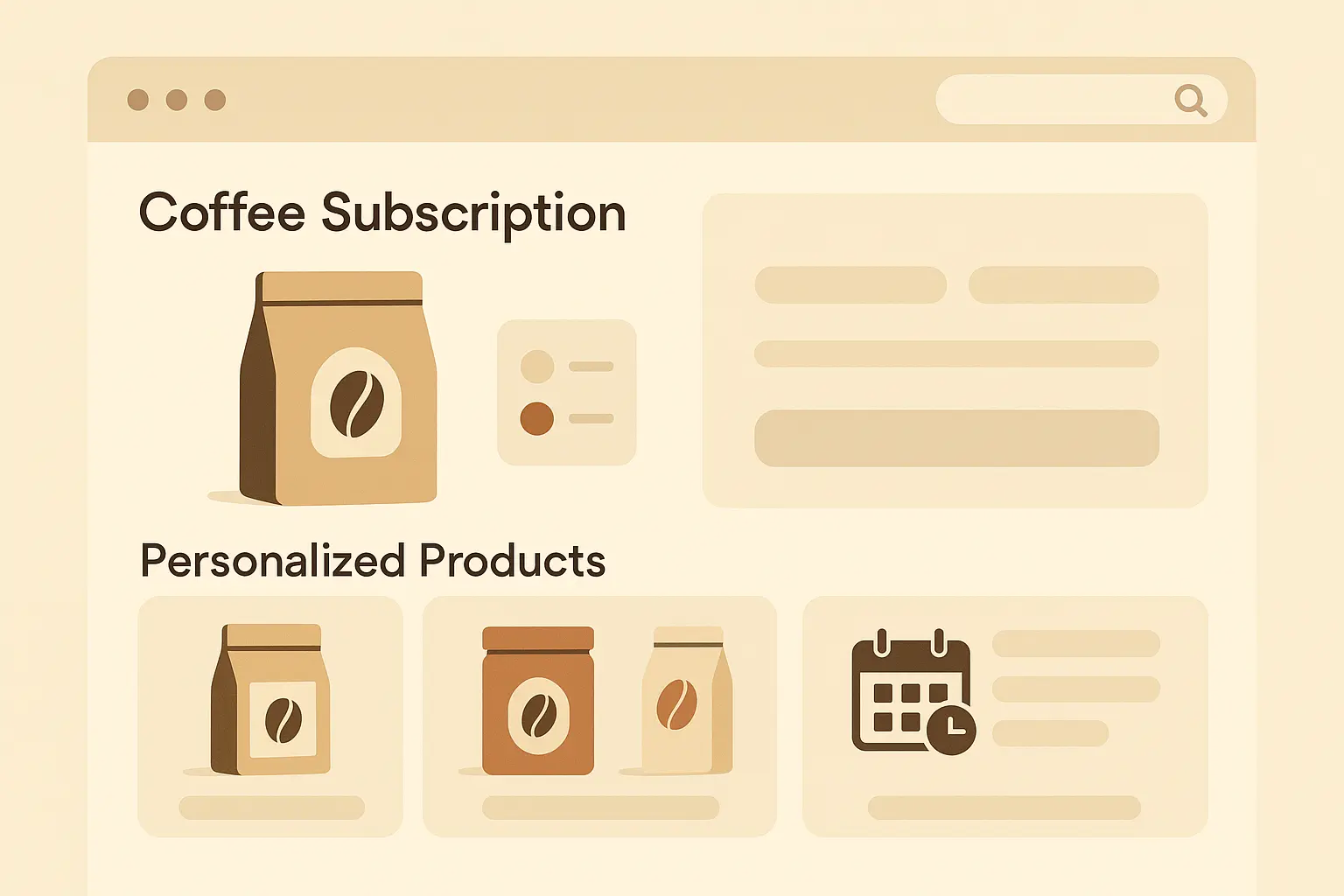
Market Segmentation and Product Innovation
Look, segmenting your market isn’t rocket science, but most brands still screw it up. Nescafé figured out something crucial early on – not everyone drinks coffee for the same reasons. Some people just want caffeine to function like a normal human being, while others treat their morning brew like a religious experience.
What’s brilliant about their approach is they didn’t try to force everyone into the same box. Instead of creating one “perfect” product, they built different coffee experiences for different types of people. The busy parent grabbing instant coffee at 6 AM has completely different needs than the coffee snob who Instagram their latte art.
I’ve seen too many brands try to be everything to everyone and end up being nothing to anyone. Nescafé avoided this trap by actually listening to what different groups wanted, then building products specifically for those needs.
Their segmentation goes way deeper than just “young vs. old” or “rich vs. poor.” They looked at lifestyle patterns, daily routines, and even emotional relationships with coffee. That’s why they can sell both basic instant coffee and premium blends without confusing their customers.
Premium Product Line Positioning
Here’s where things get really interesting – convincing people that instant coffee can be premium. Think about that for a second. For decades, instant coffee was what you drank when you couldn’t get the “real” stuff. It was the coffee equivalent of fast food.
But Nescafé Gold changed that conversation entirely. They didn’t just slap a fancy label on the same product and call it premium. They actually redesigned the entire experience – better packaging, more complex flavors, and marketing that made you feel sophisticated for choosing convenience.
The genius move was positioning it against coffee shop experiences, not other instant coffees. Instead of saying “this is better instant coffee,” they said “this gives you coffee shop quality at home.” Completely different value proposition.
Their premium lines work because they solved a real problem – people wanted good coffee but didn’t always have time for the full coffee shop ritual. By making instant coffee that actually tasted good, they created a new category that didn’t exist before.
Their premium packaging design uses visual cues associated with specialty coffee—darker colors, sophisticated typography, and premium materials. These elements signal quality before consumers even taste the product.
Pricing strategies for premium lines create clear differentiation from standard offerings while remaining accessible compared to coffee shop alternatives. The price point suggests quality without creating barriers for target consumers.
Marketing messages for premium products emphasize craftsmanship, origin stories, and flavor complexity. This communication style mirrors specialty coffee marketing while maintaining Nescafé’s accessibility and convenience advantages.
Their premium positioning strategy aligns with principles discussed in our marketing ROI calculator, where understanding value perception drives pricing and positioning decisions.
|
Product Tier |
Who It’s For |
Price Strategy |
What Makes It Special |
How They Talk About It |
|---|---|---|---|---|
|
Classic |
Everyone |
Keep it cheap |
Reliable, always works |
Your daily essential |
|
Gold |
People who care about taste |
Worth the upgrade |
Actually tastes good |
Treat yourself moments |
|
Specialty |
Coffee nerds |
Premium but not crazy |
Origin stories, complexity |
For people who get it |
|
Ready-to-Drink |
Always moving |
Convenience tax |
Grab and go |
Life’s too busy |

Global Expansion and Cultural Adaptation
Expanding globally isn’t just about translating your website into different languages and hoping for the best. Nescafé’s international success comes from understanding that coffee means different things to different cultures.
In some countries, coffee is a social ritual. In others, it’s pure fuel. Some places have centuries-old tea traditions that you’re trying to work around. Each market required a completely different approach, but somehow they managed to stay recognizably Nescafé everywhere.
What I find fascinating is how they adapted without losing their core identity. They didn’t just copy whatever local competitors were doing – they found ways to make their global strengths relevant to local needs.
The key was respecting existing habits while offering something genuinely useful. Instead of trying to replace tea culture in Asian markets, they positioned coffee as a modern complement to traditional drinks.
Regional Marketing Customization
This is where most global brands completely lose the plot. They either go full corporate and ignore local differences, or they customize so much that nobody recognizes the brand anymore.
Nescafé found the sweet spot by giving regional teams real authority to adapt campaigns, but within clear guardrails that protected the brand. Local teams could change the messaging, timing, and even some visual elements, but the core brand personality stayed consistent.
Their regional partnerships are particularly smart. Instead of trying to build credibility from scratch in new markets, they partnered with local brands and personalities that people already trusted. This gave them instant cultural credibility that would have taken years to build organically.
The timing adaptations show real cultural intelligence too. Understanding that Ramadan affects coffee consumption patterns in Muslim countries, or that monsoon season changes daily routines in India – these insights can’t be managed from a global headquarters.
Campaign timing and messaging adapt to local events, seasons, and cultural moments. Understanding when and how people consume coffee in different regions informs everything from product launches to promotional timing.
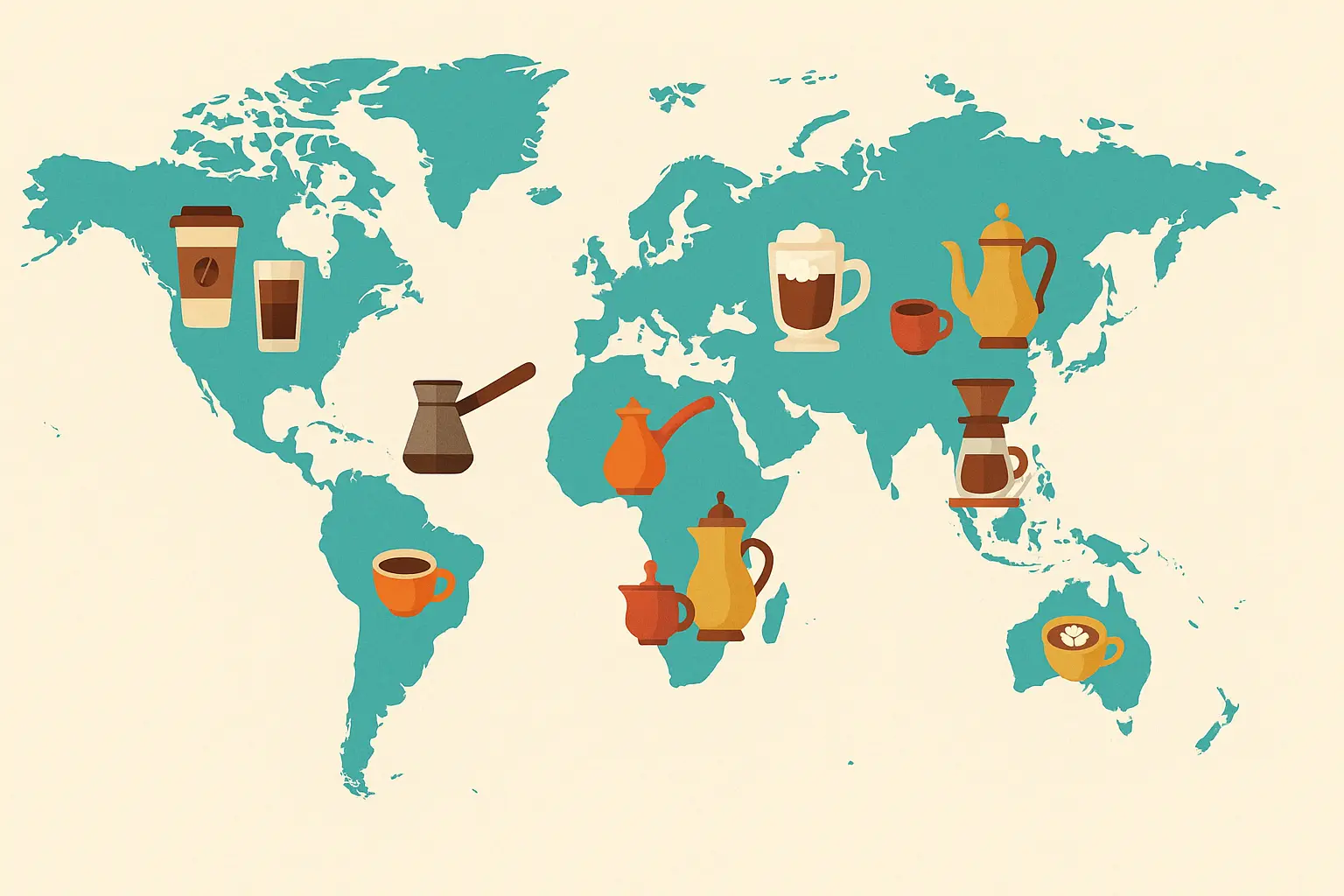
Asian Market Penetration Strategies
Breaking into Asian markets meant going up against thousands of years of tea culture. That’s not a small challenge – it’s like trying to convince Italians that your frozen pizza is better than their nonna’s recipe.
But here’s what Nescafé did right: they didn’t try to replace tea. Instead, they positioned coffee as something modern and international that complemented existing preferences. They created products like Ginseng Coffee that blended familiar Asian ingredients with coffee, making it feel less foreign.
Their success in markets like China and India proves that you can introduce new consumption habits without disrespecting existing culture. The key was patience and genuine adaptation, not just marketing translation.
The partnership strategy with local distributors was crucial because these people understood retail dynamics and consumer behavior in ways that no global team could replicate. They knew which stores mattered, when people shopped, and how purchasing decisions actually got made.
Product adaptations for Asian markets include different flavor profiles, sweetness levels, and packaging sizes that align with local preferences. These modifications required extensive taste testing and cultural research.
Marketing campaigns in Asian markets emphasize modernity and international sophistication while respecting traditional values. The messaging positions coffee consumption as progressive without being disrespectful to local customs.
Nescafé’s success in Asian markets is exemplified by their introduction of region-specific products like Ginseng Coffee and White Coffee, which blend traditional Asian ingredients with coffee to create culturally relevant offerings. These products demonstrate how global brands can honor local preferences while introducing new consumption habits, leading to successful market penetration in traditionally tea-dominant cultures.
Supply Chain and Sustainability Messaging
Sustainability used to be a nice-to-have. Now it’s table stakes, especially for younger consumers who will literally boycott brands that don’t align with their values.
Nescafé’s approach to sustainability messaging is smart because it’s not just marketing fluff – they’re actually doing the work. The Nescafé Plan isn’t just a PR campaign; it’s a comprehensive business strategy that affects how they source coffee, work with farmers, and manage environmental impact.
What makes their sustainability messaging effective is the storytelling. Instead of just throwing around statistics about carbon reduction, they tell human stories about coffee farmers and environmental initiatives. People connect with stories, not spreadsheets.
The transparency element is crucial too. Consumers are skeptical of corporate sustainability claims because they’ve been burned by greenwashing before. By providing actual data and progress reports, Nescafé builds trust through openness.
Their supply chain storytelling connects consumers with coffee farmers and environmental initiatives, creating emotional connections that go beyond product features. These stories make the brand feel more human and purposeful.
The Nescafé Plan represents comprehensive commitment to sustainability that extends beyond marketing into actual business operations. This authenticity is crucial because consumers can easily identify superficial sustainability claims.
Environmental messaging influences purchasing decisions across different markets, though the specific concerns vary by region. Climate change awareness, fair trade interest, and environmental protection priorities differ globally, requiring adapted messaging strategies.
Nescafé’s commitment to sustainability shows measurable progress through their regenerative agriculture initiatives. “Last year, almost a third (32%) of green coffee came from farmers implementing regenerative agriculture practices (up from 25% in 2023)” (Foodservice Footprint), demonstrating how authentic sustainability efforts can create competitive advantages while delivering environmental benefits.
Fair Trade and Environmental Initiatives
Fair trade isn’t just about feeling good – it’s about securing long-term supply chains while building consumer trust. Nescafé’s farmer partnership programs create win-win scenarios where farmers get better compensation and the company gets more reliable, higher-quality coffee supplies.
The environmental commitments provide concrete targets that consumers can understand and track. Saying “we’re going carbon neutral” is meaningless without timelines and measurable progress. Their approach includes specific targets and regular progress reports that build credibility.
What I appreciate about their environmental messaging is that it acknowledges challenges rather than pretending everything is perfect. This honesty actually builds more trust than claims of perfection, which nobody believes anyway.
The marketing value comes from authentic stories about real impact, not corporate PR speak. When you can show actual farmers whose lives improved because of your programs, that carries more weight than any advertising campaign.
Environmental commitments like carbon neutrality goals provide concrete targets that consumers can understand and support. These commitments also drive internal innovation and operational improvements.
The brand’s environmental messaging focuses on progress and transparency rather than perfection. Acknowledging challenges while demonstrating continuous improvement builds consumer trust and credibility.
Marketing campaigns featuring environmental initiatives perform well because they align with consumer values while differentiating Nescafé from competitors who may not have similar commitments or transparency.

Farmer Partnership Programs
The human element of their supply chain creates compelling marketing content while actually improving lives. These aren’t just transactional relationships – they’re long-term partnerships that provide training, financial support, and stable purchasing commitments.
The stories emerging from these partnerships are marketing gold because they’re genuine. Real farmers sharing their experiences carries more authenticity than any corporate messaging could achieve. But the key is telling these stories respectfully, without exploiting the people being featured.
Long-term commitments demonstrate genuine partnership rather than just opportunistic relationships. Consumers can tell the difference between authentic social responsibility and superficial corporate charity.
Marketing communications featuring farmer partnerships must balance storytelling with respect for privacy and cultural sensitivity. The goal is sharing inspiring stories without exploiting the people being featured.
Supply Chain Transparency Marketing
Transparency marketing works because it addresses consumer skepticism head-on. Instead of making claims and hoping people believe them, Nescafé provides tools that let consumers trace their coffee’s journey from farm to cup.
The technology integration enables real-time tracking that transforms supply chain management into a consumer engagement tool. This level of visibility wasn’t possible even a few years ago, but now it’s becoming an expectation.
Bean-to-cup storytelling creates emotional connections that make products feel more valuable and meaningful. When consumers understand the work that goes into their morning coffee, they’re more likely to appreciate and stick with the brand.
Transparency marketing requires genuine operational transparency—consumers can quickly identify superficial efforts that don’t reflect actual business practices. Authenticity is essential for success.

Competitive Response and Market Defense
Staying ahead in the coffee market means constantly watching for threats from every direction – traditional competitors, specialty brands, and completely new categories that might steal your customers’ attention and dollars.
Nescafé’s competitive strategy isn’t just about reacting to what others do; it’s about anticipating changes and positioning themselves advantageously before threats fully materialize. They monitor not just coffee companies but broader lifestyle trends that could impact coffee consumption.
Their innovation cycles are timed to maintain competitive advantages while addressing evolving consumer needs. The goal isn’t just keeping up with competitors – it’s staying ahead of customer expectations before customers even know what they want.
Strategic partnerships and acquisitions have been used selectively to strengthen market position or acquire capabilities that would be difficult to develop internally.
Innovation Pipeline Management
Managing innovation isn’t just about having good ideas – it’s about having the right ideas at the right time with the right execution. Nescafé’s innovation pipeline balances short-term market needs with long-term strategic vision.
Consumer testing throughout development ensures innovations meet actual market needs rather than internal assumptions. Too many companies fall in love with their own ideas and skip the part where they check if customers actually want what they’re building.
Strategic timing prevents new products from cannibalizing existing ones while maximizing market impact. The goal is expanding the pie, not just rearranging the slices.
Technology integration creates differentiated experiences that competitors can’t easily replicate. These innovations often require significant investment but provide sustainable competitive advantages that justify the cost.
Technology Integration in Products
Smart coffee solutions represent where traditional products meet modern digital lifestyles. Nescafé’s technology integration transforms basic coffee products into connected experiences that provide ongoing value beyond the initial purchase.
App connectivity enables personalized recommendations, consumption tracking, and social sharing features that extend engagement beyond the physical product. These digital touchpoints create opportunities for ongoing relationships with customers.
IoT-enabled products collect usage data that informs product development and marketing strategies. Understanding how consumers actually use products provides insights that surveys and focus groups can’t capture.
The balance between innovation and accessibility ensures enhanced products don’t alienate customers who prefer simpler experiences. Not everyone wants their coffee maker connected to the internet, and that’s okay.
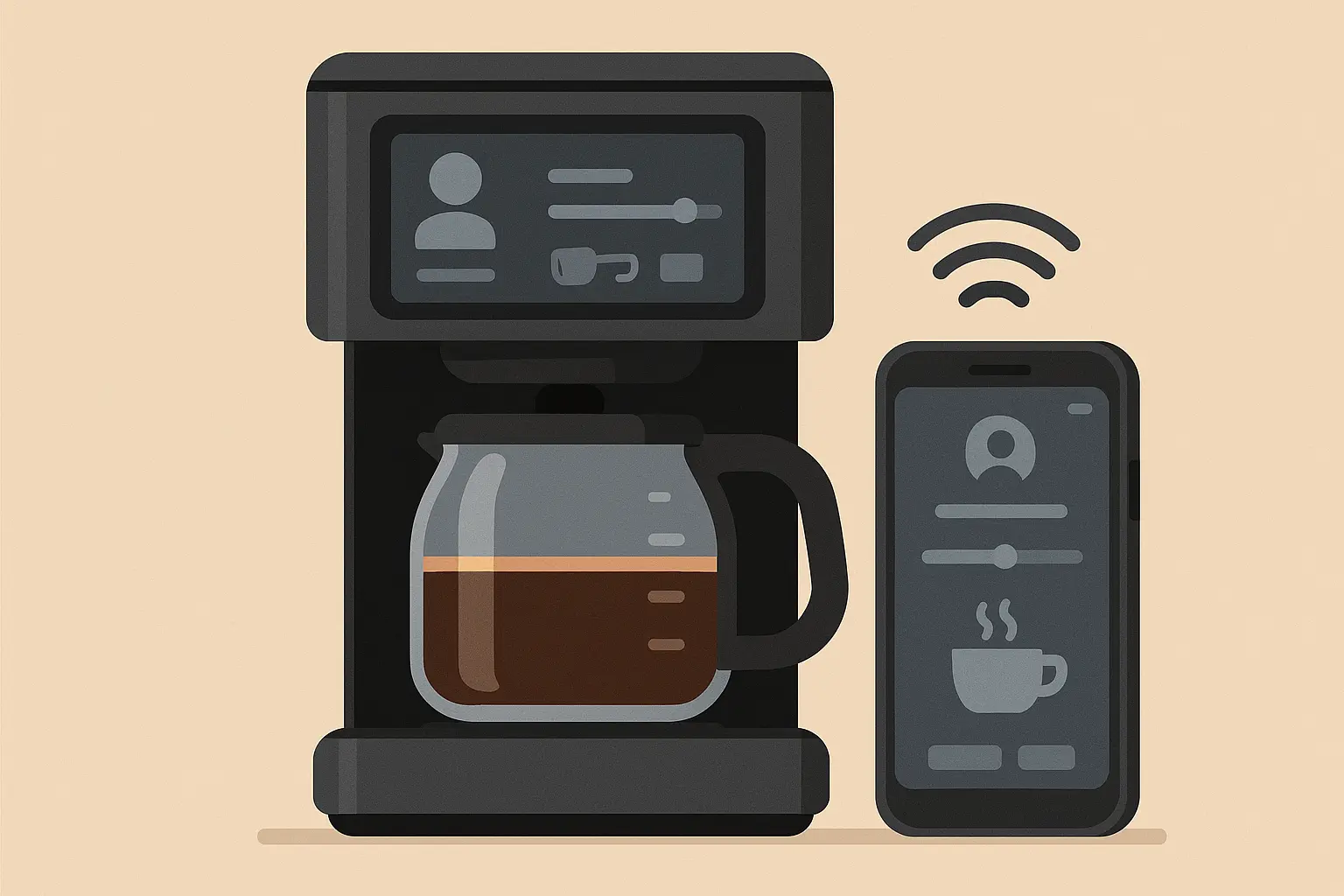
Crisis Management and Brand Recovery
Crisis management isn’t about avoiding problems – it’s about handling them so well that you actually come out stronger. Nescafé’s approach emphasizes transparent communication, swift action, and authentic brand rehabilitation when facing challenges.
Transparent communication during crises builds trust even when admitting mistakes. Consumers appreciate honesty and are more likely to forgive brands that communicate openly about problems and solutions.
Swift action to address underlying issues demonstrates genuine commitment to consumer welfare rather than just damage control. This approach often strengthens brand loyalty among consumers who see authentic concern for their interests.
Brand rehabilitation focuses on rebuilding trust through consistent actions over time rather than quick fixes or superficial changes. Real recovery takes time and sustained effort.
Public Relations Strategy During Challenges
PR during crises requires careful balance between acknowledging problems and maintaining confidence in the brand. Media engagement focuses on providing accurate information and expert access rather than avoiding difficult questions.
Third-party validation from industry experts, regulatory bodies, or independent testing provides credibility that internal communications alone cannot achieve. Sometimes you need outside voices to vouch for your credibility.
Coordinated messaging ensures consistency across all communication channels, preventing conflicting information that could undermine recovery efforts. Mixed messages during crises can turn manageable problems into disasters.
Nescafé’s crisis management effectiveness is demonstrated through their handling of sustainability challenges. When facing criticism about environmental impact, they launched the comprehensive Nescafé Plan 2030, providing concrete targets and regular progress reports. This proactive approach transformed potential reputation damage into a competitive advantage by demonstrating authentic commitment to addressing concerns rather than defensive messaging.
Competitive Pricing Strategy
Competitive pricing requires understanding not just competitor prices but also consumer price sensitivity and value perceptions. Value proposition communication helps justify pricing by emphasizing benefits that competitors may not offer.
Promotional strategies provide temporary price advantages without permanently reducing perceived value. These promotions can counter competitive pressure while maintaining long-term pricing integrity.
Dynamic pricing models allow regional adaptation to local competitive conditions while maintaining global brand consistency and profit targets. What works in one market might not work in another.
Their pricing strategy effectiveness can be measured using tools similar to our ROAS calculator, which helps brands understand the return on advertising spend across different pricing scenarios.
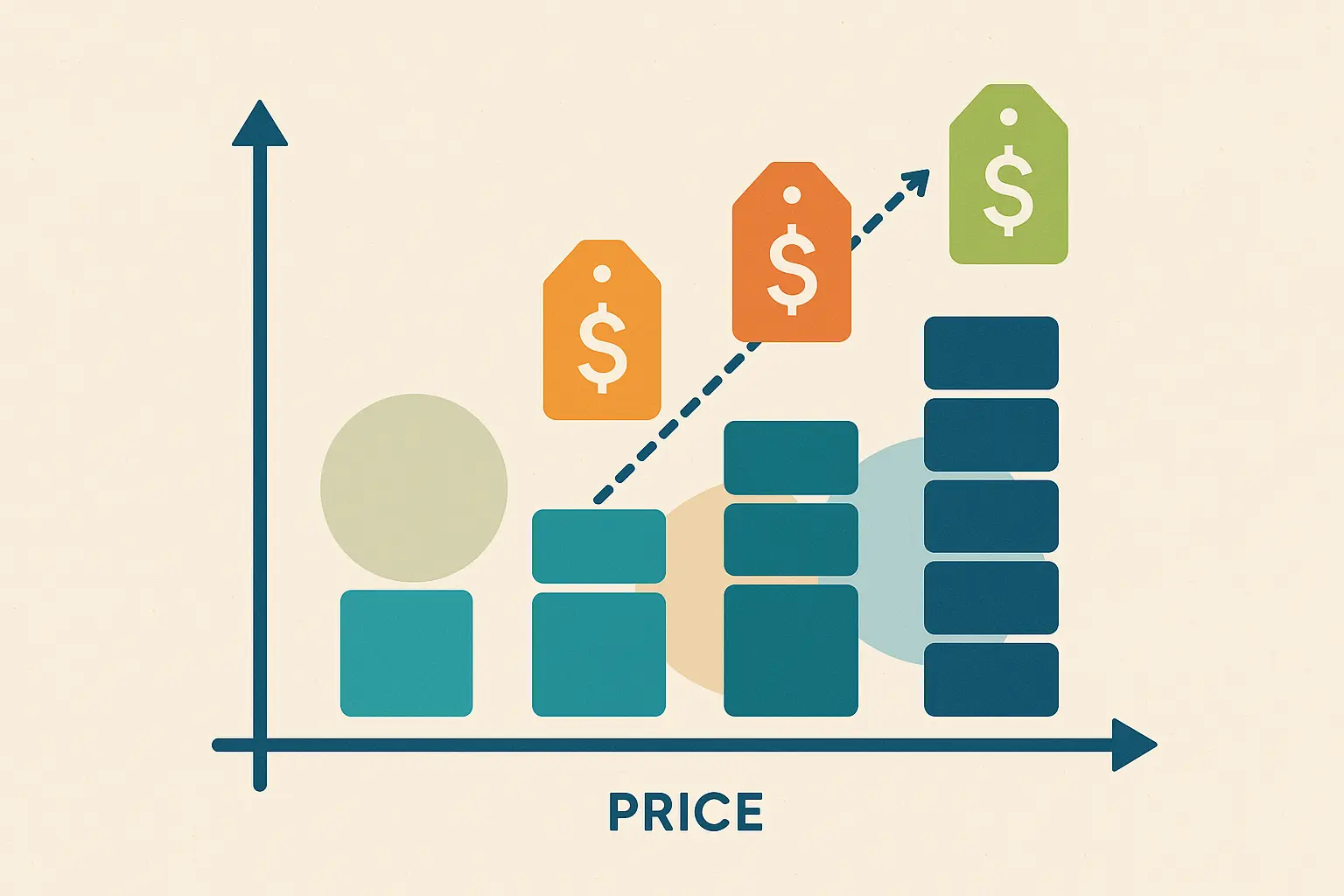
Brand Measurement and Performance Analytics
Measuring brand performance has evolved way beyond counting sales and hoping for the best. Today’s analytics provide insights into brand health, consumer sentiment, and predictive modeling that actually help you make better decisions.
Nescafé’s measurement systems combine traditional metrics with modern analytics to create comprehensive views of marketing effectiveness and brand strength across global markets. This analytical foundation enables informed decision-making and continuous improvement.
Real-time monitoring enables rapid response to performance changes or emerging opportunities. In fast-moving markets, delays can mean missed opportunities or competitive disadvantages.
Data integration across multiple touchpoints provides holistic views of customer journeys and marketing effectiveness. Understanding how different marketing activities work together enables better resource allocation and strategy optimization.
Predictive analytics help anticipate market changes and consumer behavior shifts, enabling proactive strategy adjustments rather than reactive responses.
Consumer Insights and Market Research
Consumer research has expanded beyond surveys and focus groups to include digital behavior analysis, social media sentiment tracking, and real-time feedback collection. Modern research combines traditional methodologies with digital analytics to create comprehensive consumer profiles.
Global research coordination ensures insights from different markets inform overall strategy while respecting local market nuances. This approach enables both global consistency and local relevance.
Emerging trend identification requires monitoring not just coffee-related developments but broader lifestyle and cultural shifts that could impact consumption. This broader perspective enables proactive strategy development.
Research insights drive decision-making across all business functions, ensuring consumer needs remain central to business strategy rather than just marketing messaging.
Brand Health Tracking Systems
Brand health tracking provides leading indicators of business performance rather than just lagging sales data. Key performance indicators include both rational measures and emotional measures that together provide comprehensive views of brand health.
Segmented tracking reveals how different consumer groups perceive and interact with the brand, enabling targeted strategies that address specific audience needs and preferences.
Competitive benchmarking provides context for performance evaluation and identifies areas where competitive advantages exist or need development.
The tracking methodology includes awareness metrics, consideration rates, loyalty measurements, and sentiment analysis that provide early warning signs of brand challenges while identifying opportunities for growth.
Their comprehensive tracking approach aligns with advanced analytics strategies discussed in our guide on advanced analytics for strategic growth, where data-driven insights drive business decisions.

Brand Health Tracking Checklist:
-
☐ Monitor brand awareness across key demographics
-
☐ Track consideration rates and purchase intent
-
☐ Measure customer satisfaction and loyalty scores
-
☐ Analyze sentiment across social media platforms
-
☐ Benchmark against key competitors
-
☐
-
☐ Assess brand association strength
-
☐ Evaluate pricing perception and value proposition
-
☐ Monitor campaign effectiveness and ROI
-
☐ Track market share trends
-
☐ Assess brand equity development over time
How The Marketing Agency Can Transform Your Brand
Here’s the thing – you don’t need Nescafé’s massive budget to implement smart digital strategies. You need the right approach and people who actually know what they’re doing.
The lessons from Nescafé’s success apply directly to businesses looking to scale their marketing effectively. The Marketing Agency’s data-driven approach aligns with the strategic principles that made Nescafé successful.
Their comprehensive services can help brands achieve similar levels of integrated digital presence and measurable performance. With investment options ranging from $500-$10,000 monthly, they provide scalable solutions that mirror the performance-focused strategies driving Nescafé’s continued success.
The performance-based methodology ensures marketing investments generate measurable returns rather than just hoping for results. Their focus on data analytics and ROI optimization reflects the strategic measurement approaches that have made Nescafé successful across global markets.
Whether you’re looking to improve social media engagement, develop direct-to-consumer capabilities, or create integrated digital campaigns, comprehensive service offerings can help achieve the kind of coordinated digital presence that drives real business growth.
Ready to transform your brand’s digital marketing strategy? Contact The Marketing Agency today to discover how their proven, performance-focused approach can help you achieve measurable results and sustainable growth, similar to the strategic insights provided in our GA4 audit guide for comprehensive performance tracking.

Final Thoughts
What strikes me most about Nescafé’s success isn’t any single brilliant campaign or strategy – it’s their consistent commitment to understanding and serving consumer needs across different markets and changing preferences.
Their transformation from simple instant coffee to global lifestyle brand provides actionable insights for businesses across industries. The key lessons remain relevant regardless of company size or market position: digital-first marketing, authentic consumer engagement, strategic innovation, and performance measurement.
Success comes from consistent execution of data-driven strategies that prioritize consumer needs while maintaining brand authenticity and market relevance. Modern consumers expect authentic interactions and transparent communication, and brands that deliver these experiences will continue to thrive.
The sustainability and social responsibility elements demonstrate how modern brands can create competitive advantages by aligning business practices with consumer values. This alignment isn’t just good marketing – it’s good business that creates long-term value for everyone involved.



